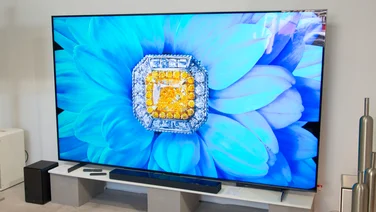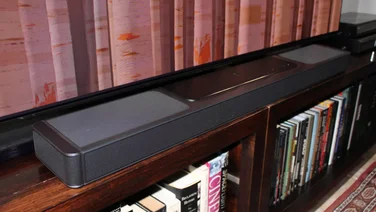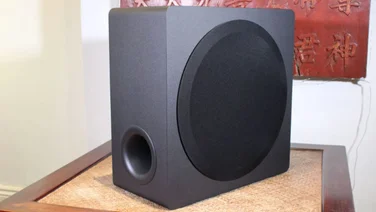To help us provide you with free impartial advice, we may earn a commission if you buy through links on our site. Learn more






JVC’s DLA-RS46 is a top of the range home cinema projector that uses D-ILA technology. It stands for Direct-Drive Image Light Amplification and is JVC’s own brand of LCOS (liquid crystal on silicon) technology. It has three D-ILA chips – one each for red, blue and green. By combining the light from all three, the projector can create a full-colour image.

It’s a huge projector, so you’ll want to mount it to the ceiling, but you don’t need to worry about accessing the top of the unit here, as everything you need is located on the back. There are menu, power, input and direction buttons right next to its wide variety of connections, which include two HDMI inputs. There are also component and VGA inputs for older kit.

The Ethernet port is a little unusual, but connect the DLA-RS46 to your home network and you can control it with an iOS device. The app’s useful, as you control all of the projector’s image settings without anything appearing on screen and obscuring part of the picture.

Controlling the setting via an iOS app is a nice touch
The projector takes a while to warm up and turn on, but we were pleased to see that it has electronic lens adjustment that lets you control the lens via the remote. This made it much easier to align the projector and fill our screen, not least because of its generous 2x optical zoom and huge amounts of horizontal and vertical lens shift adjustment.
The number of options available on the DLA-RS46 is staggering. There are eleven picture modes in total that cater for almost any type of film, including Natural, Cinema, Stage, Film, Animation, 3D and five customisable User modes. All of them can be tweaked to your liking, though, and you have control over brightness, contrast, colour, tint, colour temperature and gamma settings in its basic menu, as well as sharpness, noise reduction, colour space, lens aperture, lamp power and custom gamma in its advanced menu settings.
IMAGE QUALITY
We found that Natural produced the best colours and contrast, and our initial impressions were extremely promising. Even though it only has a 1,300 ANSI lumen lamp, our 2D test footage looked absolutely stunning. Images were crisp and packed full of detail, colours were rich and vibrant, and blacks were some of the deepest we’d seen.
Unfortunately, we soon discovered that each mode had its own strengths and weaknesses. Animation really brought colours to life in Ice Age 3, but its colour temperature was a tad high for any other type of film. Cinema, on the other hand, struck a good balance between vibrancy and a high contrast, but it also introduced a noticeable amount of grain into the picture, even in animated films.
It wasn’t too much of an intrusion on more sedate scenes, but it grew worse during more intense action sequences and fast camera pans. Backgrounds had a tendency to blur slightly or appear quite jerky as well, but even though we could help smooth out the image using its Clear Motion Drive option, this in turn introduced an unwelcome level of pixellation. Thankfully, it’s less of a problem in other colour modes. The five User modes seemed to offer the best compromise, but we could still see traces of it in all of them and this may not be to everyone’s tastes.

THE THIRD DIMENSION
The grain persisted when we watched films in 3D as well, using the bundled pair of glasses. You have control over the 3D format, parallax and crosstalk cancelling, but none of these could erase the small amount of flicker we saw while watching films. It was less noticeable during darker, moodier films, but it was quite distracting in films like Ice Age 3 which have much lighter, brighter scenes and a lot of white on screen.Playing games in 3D failed to leave an impression as well, as we saw a considerable amount of crosstalk regardless of where we were sitting. Adjusting the parallax just about made it playable, but we weren’t able to eliminate the crosstalk completely. This was disappointing, as we expected more from a projector of this price.
Running costs are quite high, too, the lamp rated to last for 3,000 hours in High mode and 4,000 in Normal mode (ECO). This equates to running costs of 10p and 8p per hour respectively, which is considerably more than other projectors
Overall, JVC’s DLA-RS46 was slightly disappointing for a high end projector. Grain issues aside, it produced spectacular 2D images and its comprehensive range of menu settings offer a near endless amount of tinkering. Its 3D capabilities, however, were lacklustre. At this price the Panasonic PT-AT6000E gives you better picture quality in 2D and 3D.






